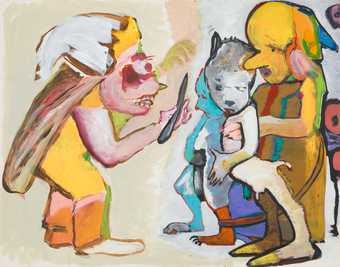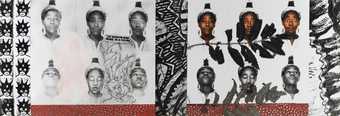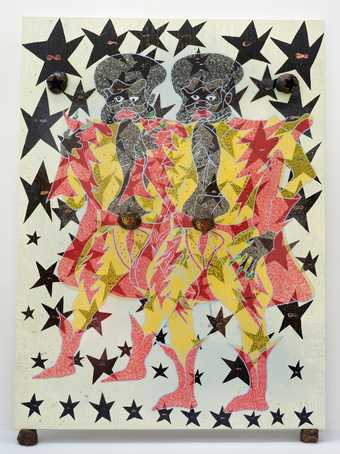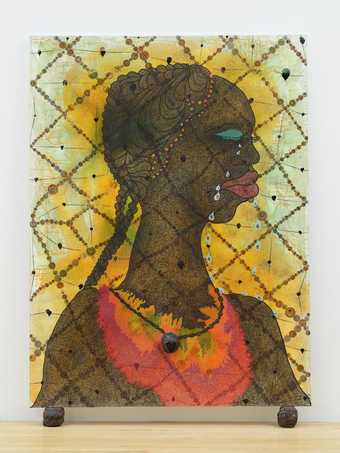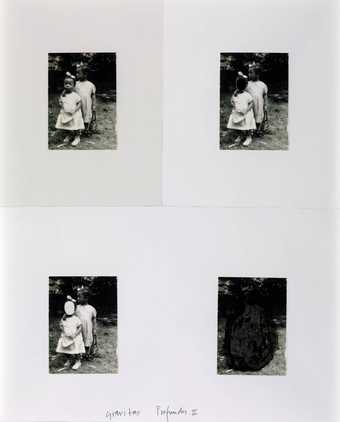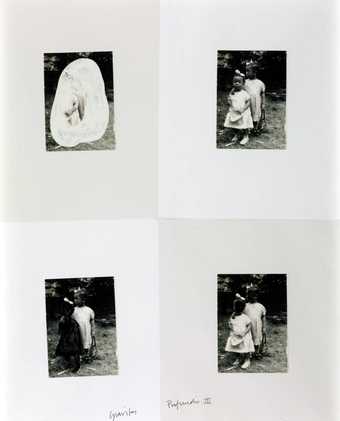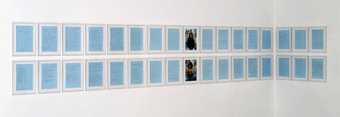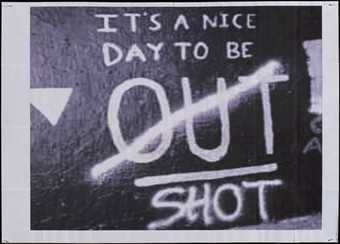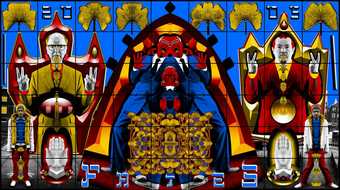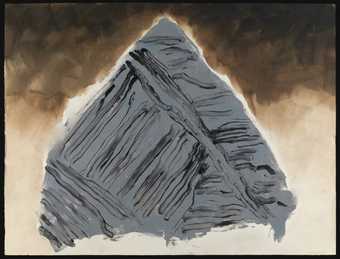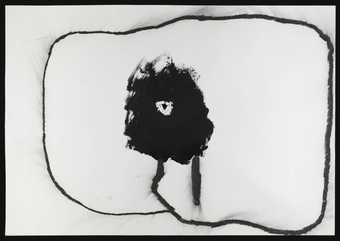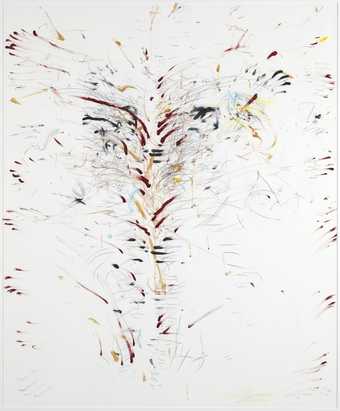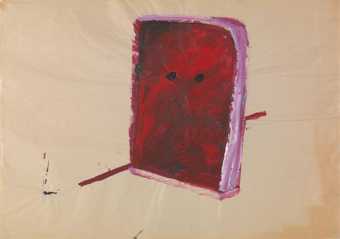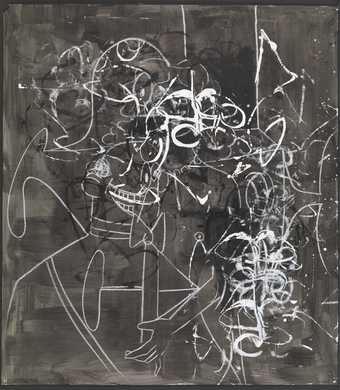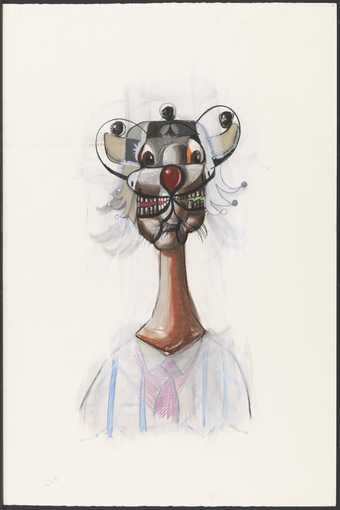
In Tate St Ives
- Artist
- Veronica Ryan OBE born 1956
- Medium
- Digital prints with acrylic paint and ink on paper
- Dimensions
- Support: 416 × 273 mm
frame: 444 × 303 × 38 mm - Collection
- Tate
- Acquisition
- Presented by the artist 2001
- Reference
- T07774
Summary
This work is one of three drawings in Tate’s collection (see also Gravitas Profundis II 2000, Tate T07772 and Gravitas Profundis III 2000, Tate T07773) that Ryan made while she was artist in residence at Tate St Ives (1998-2000). During this period, Ryan worked in the former studio of Barbara Hepworth (1903-1975). Hepworth had moved to St Ives shortly before the outbreak of World War II, and lived and worked in the area for the remainder of her life. She was interested particularly in the qualities of form and space, and her carved sculptures were often pierced expressing a concern with internal and external forms. While in residence in the studio, Ryan made a series of works that responded to Hepworth’s practice while simultaneously addressing her own concerns. Ryan found the Cornish peninsula reminded her strongly of the island of Montserrat in the Caribbean where she was born and lived until emigrating with her family to the United Kingdom as a young child. These similarities prompted Ryan to revisit childhood memories in the work she made at St Ives.
The drawings in this series are made up of laser printed copies of a single photograph from Ryan’s family archive. Ryan has, in areas, over-painted the replicated images with white acrylic paint and black ink. The paint is unevenly applied, opaque in some parts so as to completely mask the image, and elsewhere translucent, producing the effect of a veil or shroud. The irregularity of the brushstrokes and random splashes indicate Ryan’s rapid application of the paint and ink. Such expressionistic application, paired with the paint’s obliterating function on the image, suggests the process of making the drawings may have played a cathartic role for Ryan. When Ryan was first invited to work at St Ives, one of the volcanoes in Montserrat erupted, causing the island to be evacuated, and ultimately covering with ash the entire area where her family had lived on the Southern part of the island. The masking of the faces of the girls in the photograph mirrors the obliterating effects of the eruption to the history of the island and of Ryan’s own family.
Ryan is better known as a sculptor, and during her residency she worked largely with marble donated by the Hepworth Estate, creating a number of sculptural works, two of which are owned by Tate (Quoit Montserrat 1998, Tate T07770 and Mango Reliquary 2000, Tate T07771). These drawings are not a great departure from the sculptural works, however. The shapes of the painted sections echo the forms of the seeds and pods that feature in many of Ryan’s sculptures, as well as referring to Hepworth’s sculptural forms. The masking of the photographic images also reaffirms Ryan’s concern with wrapping or hiding elements that is typical of her sculptures (as in Relics in the Pillow of Dreams 1985, Tate T06530). Ryan sees these drawings, with their photographic basis and biographical connections, as having a more distinct narrative thread than her sculptural pieces.
Further reading:
Veronica Ryan – Artist in Residence: Quoit Montserrat, exhibition leaflet, Tate St Ives, 2000
Veronica Ryan, exhibition catalogue, The Wood Street Gallery, Pittsburgh, 1993
Maria Bilske
November 2004
Does this text contain inaccurate information or language that you feel we should improve or change? We would like to hear from you.
Explore
- abstraction(8,615)
-
- non-representational(6,161)
-
- irregular forms(2,007)
- emotions and human qualities(5,345)
-
- memory(367)
- defacement(257)
- photographic(4,673)
- body(4,878)
-
- head / face(2,497)
- girl(1,079)
- black(796)
You might like
-
Paula Rego Nanny, Small Bears and Bogeyman
1982 -
Chris Ofili CBE Double Captain Shit and the Legend of the Black Stars
1997 -
Chris Ofili CBE No Woman, No Cry
1998 -
Veronica Ryan OBE Gravitas Profundis II
2000 -
Veronica Ryan OBE Gravitas Profundis III
2000 -
Tracey Emin Exploration of the Soul
1994 -
Henrik Olesen Untitled
2004 -
Gilbert & George Fates
2005 -
Trevor Bell Place
1989 -
Trevor Bell Looking
1997 -
Rebecca Horn House of Pain
2005 -
Dame Phyllida Barlow DBE RA Untitled
1997 -
George Condo The Butcher’s Remorse
2009 -
George Condo Outer Antipodes
1996

